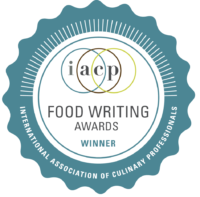Sri Lanka (formerly known as Ceylon) is that tiny teardrop of an island that falls into the Indian Ocean from the eastern tip of India. It is a land of spices and curries, so if you like your food bland, best select a different holiday destination!
Himself and I visited Priyani Ceylon Fusion Oriental Cafe, just a stone’s throw from UC Northridge. Our Sri Lankan host was proud of his cuisine and his cooking, and after he waxed poetic about the menu’s offerings, we asked him to bring us what he thought we should have. He seemed quite pleased with our deference.
“Lump rice” isn’t a very sexy name for a dish, but don’t let that put you off. It’s essentially an entire meal bundled up and cooked in a single banana leaf. Himself gently opened that steaming leaf to find eggplant curry, roast chicken, green banana curry, onion sambal and basmati rice nestled inside. I managed to swipe a few bites, but Himself guarded his meal jealously. I’ll just have to go back and get my own next time. Everything in the leaf was tasty, but most surprising was the green banana curry. The dense, starchy consistency of the cubes of unripe banana had us puzzling for a few minutes. What kind of tuber is this? Or is it yucca? We finally went back to the menu and realized that the texture was so different from that of either ripe bananas and cooked plantains that we hadn’t recognized it as banana. It’s always puzzling when you encounter a familiar food that you can’t recognize because of difference in culinary context.
My biryani was made of basmati rice and loaded with cashews, raisins, currants and an array of spices. Buried inside this mound of rice were several pieces of roast chicken. (To my eyes it looks more like what I’d call “lump rice” than Andy’s “leaf rice!”) The biryani was topped with a roasted egg and served with a dense sweet eggplant curry on the side.
Asian cooks know their spices like pianists know their keys. When a world of spices grows in your backyard, you don’t have to shell out anywhere from $4 to the-sky’s-the-limit for a single tiny bottle. So you can step out your back door, harvest freely and experiment to your heart’s content to come up with the spice blend you like best. And every cook has his and her own favorite blend.
My friend and colleague Carol Selva Rajah shares one of her favorite Sri Lankan spice blends:
3 Tbsp. coriander seeds
1½ Tbsp. cumin seeds
1 Tbsp. fennel seeds
2 tsp. whole peppercorns
¼ tsp. fenugreek seeds
¼ tsp. cloves
¼ tsp. cinnamon
¼ tsp. cardamom
Dry roast the spices and grind in a small coffee grinder. Add chili powder and fresh curry leaves to flavor if needed.
Sri Lanka’s wealth of spices lured many a ship from Europe in the 15th and 16th centuries. With all those neatly organized rows of tins and bottles of spices in the baking section of the grocery store at our disposal, it’s difficult to imagine expeditions being prompted by the allure of something as ordinary–to us, anyway–as pepper and cinnamon. But the more I learn about spices and cook with those amazing blends, the more I understand what the fuss was all about!
*Special thanks to Carol Selva Rajah for her knowledge and insights. If you want to learn more about cooking with the abundance of spices and flavorings from Asia, look for her book, Heavenly Fragrance.


















